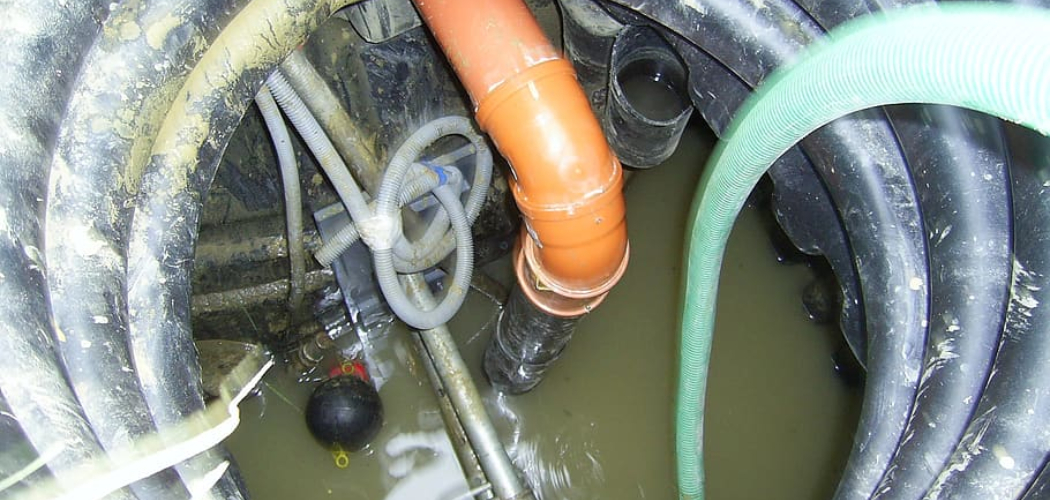If you are searching for the best way to tackle your water pressure tank issues, then look no further. This blog post will guide you through all of the steps necessary to ensure that your water pressure tank is properly drained and maintained.
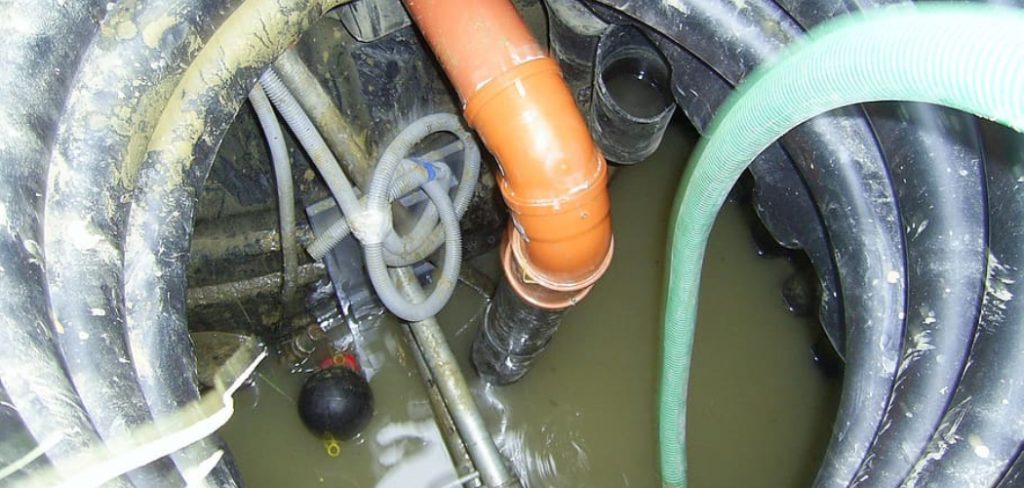
Not only does draining a water pressure tank help reduce costs in energy bills, but it can also help prevent any problems down the line when it comes to plumbing and household repairs. By understanding these simple processes, you’ll soon be on your way to creating efficient and cost-effective means of tackling your home’s water flow and maintenance needs.
One common task is draining and maintaining the water pressure tank so that it runs properly and accurately. This can be daunting if you’ve never done this before, but understanding how to drain a water pressure tank is essential for keeping your system running smoothly.
In this blog post, we will take an in-depth look at what exactly needs to be done when draining a water pressure tank as well as tips and advice from industry experts to make sure the job gets done right the first time around!
Why is It Important to Drain a Water Pressure Tank?
1. To Prevent Overpressurization
Water pressure tanks are designed to maintain a specific level of water pressure in the system. If it is not drained, an over-pressured tank can cause a water system malfunction or outright failure. Also, an over-pressurized tank can cause the water pressure switch to become unreliable and might even fail.
2. To Prevent Corrosion
If left undrained, a water pressure tank is at risk of corrosion. Corroded tanks cannot be used as they must be able to hold pressure in order to work properly properly. If your tank is corroded, it must be replaced.
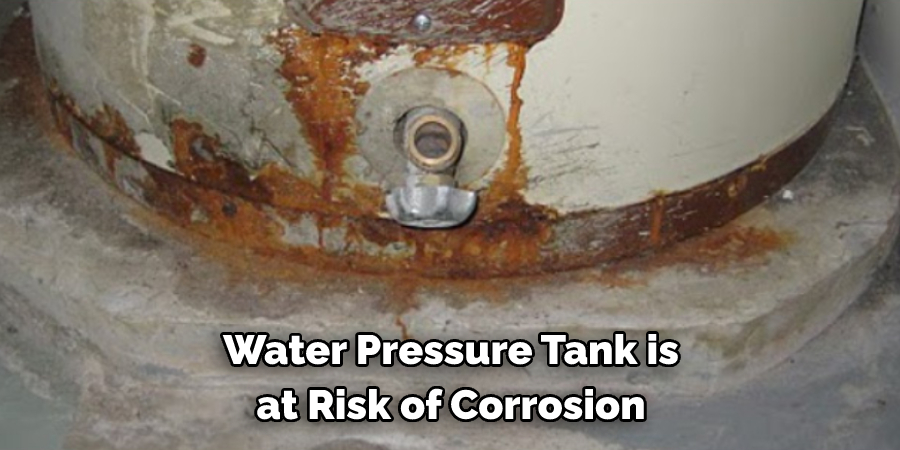
3. To Prevent Contamination and Build Up of Sediment
Draining a water pressure tank helps to flush out any sediment or contamination that may have collected inside the tank over time. This helps to ensure that your water supply remains safe for use.
4. To Remove Rust and Sediment Buildup
Draining a pressure tank helps remove any rust or sediment buildup from inside the tank. This helps to ensure that your tank remains in good condition and is able to function correctly. Also, it helps to prevent any rust particles from entering and contaminating the water supply.
How to Drain a Water Pressure Tank in 5 Easy Steps
Now that you know why it is important to drain a water pressure tank, here is how you can do it safely and efficiently:
Step 1: Turn Off the Power
The very first step is to make sure that the electricity supplying your water pressure tank is switched off. This will ensure that you can work on the tank without the risk of shock or injury. Make sure you are doing it carefully.
Step 2: Check Valves and Fittings
Once the electricity has been switched off, check all valves and fittings connected to the tank for any signs of leakage, corrosion, or damage. If any of these components are not functioning properly, make sure to replace them before continuing with the process.
Step 3: Drain Tank
The next step is to drain the water from the tank. Do this by simply opening a valve at the bottom of the tank and allowing all of the water to empty out into a bucket or drain. Make sure to secure the bucket or place it in the sink so that you don’t make a mess.
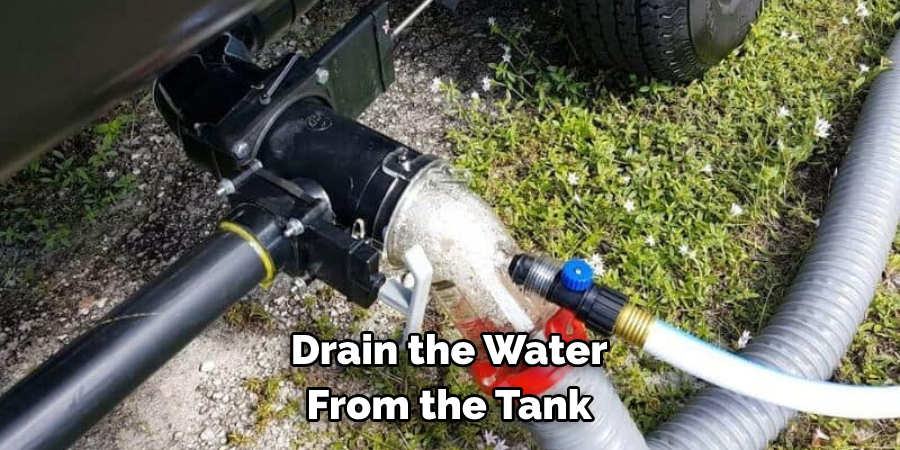
Step 4: Clean the Tank
Once all of the water is out, you can begin cleaning the inside of the tank. Use a brush and detergent to scrub away any buildup of sediment and scale deposits. Repeat this process until the inside of the tank is completely clean.
Step 5: Reassemble and Refill Tank
The last step is to reassemble all of the components that were taken apart during the draining process. Make sure all valves, fittings, and connections are properly secured before refilling the tank with water. Once it’s done, you can switch the power back on and your water pressure tank is ready to use.
Following these five easy steps can help you maintain a healthy and functioning water pressure tank for years to come! Make sure to check it regularly for signs of damage or leakage. If any issues arise, take action immediately to prevent further damage. Taking the extra measures of draining and cleaning your water pressure tank can help prolong its life.
Some Additional Tips to Drain a Water Pressure Tank
1. Do Not Use a Garden Hose or Other Attachment
It is important to remember not to use any attachments, including a garden hose, to drain the water pressure tank. The pressure from these hoses can cause damage to the tank and may even lead to a possible leak.
2. Shut off All Power Sources
Before draining the tank, make sure to shut off all power sources, such as the power supply to the pump or any other electrical components connected to the tank.
3. Install a Drain Cock
A drain cock allows you to quickly and easily empty out the tank after draining it out of water. Connect a garden hose to the drain cock and open it up at both ends, allowing the water to flow out.
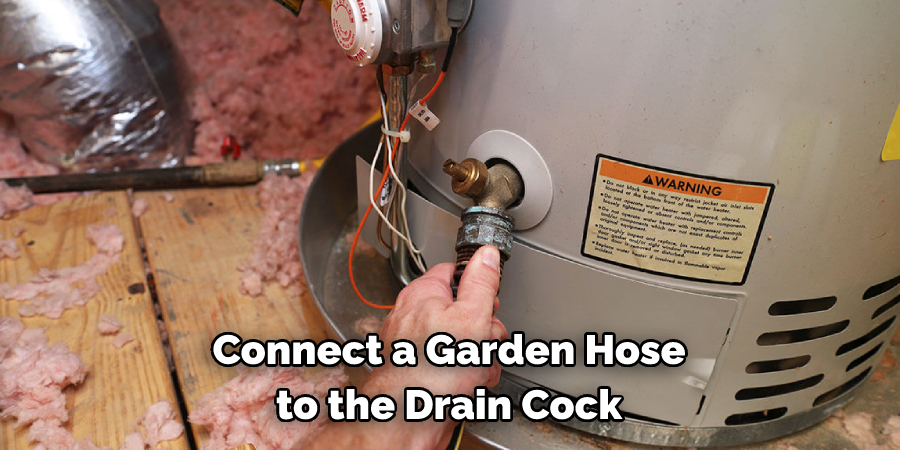
4. Check for Leaks
After draining the tank, check for any leaks or signs of damage before you shut off the water supply and turn on the power sources again. If there are any leaks or signs of damage, you may need to replace parts of your equipment before reattaching it and turning it back on.
5. Pay Attention to Safety
Before draining a water pressure tank, make sure to pay attention to safety and wear protective gear such as goggles or gloves. Also, be prepared in case of an emergency by having the necessary supplies on hand like a fire extinguisher or first aid kit. Additionally, make sure that all family members and pets are out of the area during this process.
Following these tips can help make draining a water pressure tank a safe and successful experience. After successfully following these steps, your tank should be drained properly and ready for use again.
Frequently Asked Questions
What Precautions Should I Take When Draining a Water Pressure Tank?
It is important to take safety precautions when draining a water pressure tank. Be sure to turn off the power supply or shutoff valve that supplies water to the pressure tank before starting any work.
Wear protective gloves and eye protection, as well as clothing that fully covers your body and legs. Make sure the area is well-ventilated and does not work near open flames. Additionally, be aware of any potential dangers such as electric shock or hazardous chemicals that could be present in the tank.
What Are The Benefits Of Draining a Water Pressure Tank?
Draining a water pressure tank ensures that all of the air has been expelled from the tank, which can help to improve pressure and performance. Additionally, draining a water pressure tank can also help to reduce maintenance costs, as it will ensure that any sediment or debris is removed from the bottom of the tank. Finally, draining a water pressure tank regularly helps to extend its lifespan by preventing corrosion and other damage caused by the accumulation of trapped air and debris.
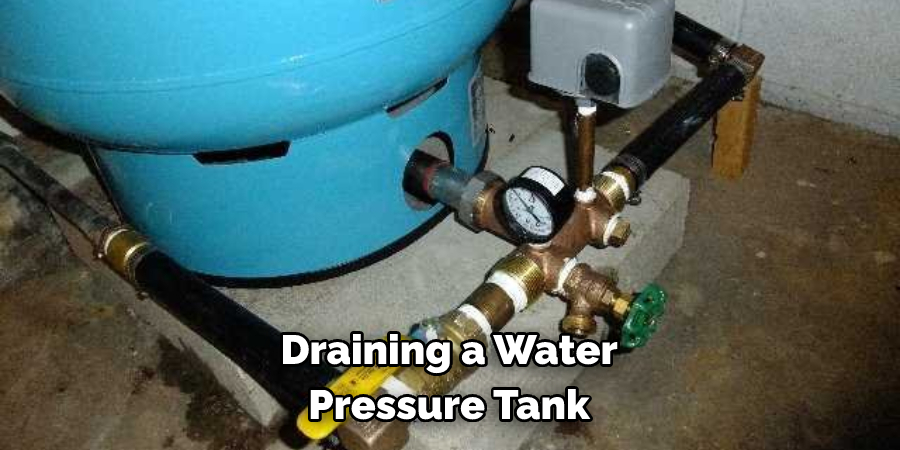
What Is The Best Way To Drain a Water Pressure Tank?
The best way to drain a water pressure tank is to use a pump or siphon. When using a pump, be sure to connect it securely to the outlet pipe at the base of the tank, then switch on the power supply. As the water begins to flow, you can direct it into a separate container for easy disposal.
When using a siphon, attach one end of the tubing to the outlet pipe at the bottom of the tank, then use suction to draw water out and dispose of it. After completing either method, be sure to turn off the power supply or shut off the valve.
Conclusion
When it comes to draining a water pressure tank, it’s important to stay safe and have the necessary tools. The best way to go about this task is to gather a flat-tipped screwdriver, an adjustable wrench or two, and a bucket.
Before you begin, be sure to switch off your breaker for safety reasons. After draining the tank completely and refilling it with fresh water and air, your job is done! Keep in mind that this task should only take approximately half an hour from start to finish.
And remember: if ever in doubt, hiring a professional plumber can help make sure nothing goes wrong and save you the headache of dealing with a potential plumbing crisis. Maintenance of any kind can always be tricky but by following these simple steps about how to drain a water pressure tank, maintaining your water pressure tank shouldn’t be a difficult task at all.

